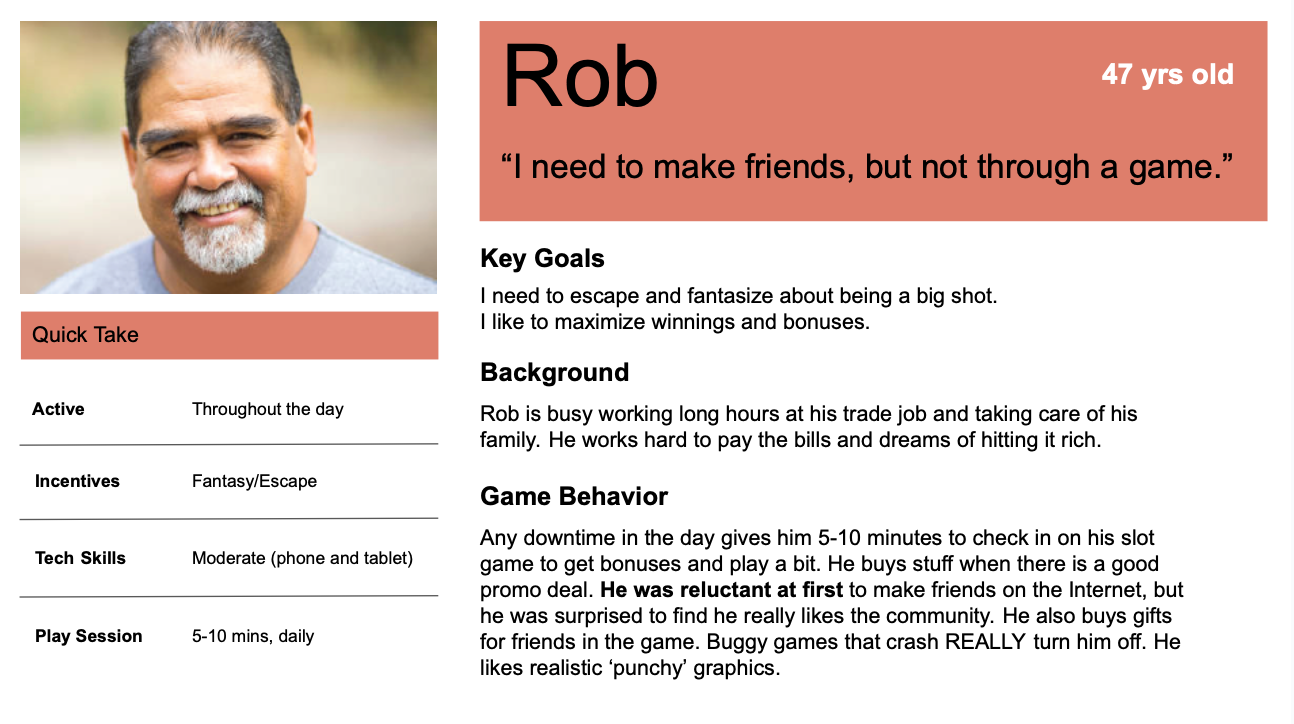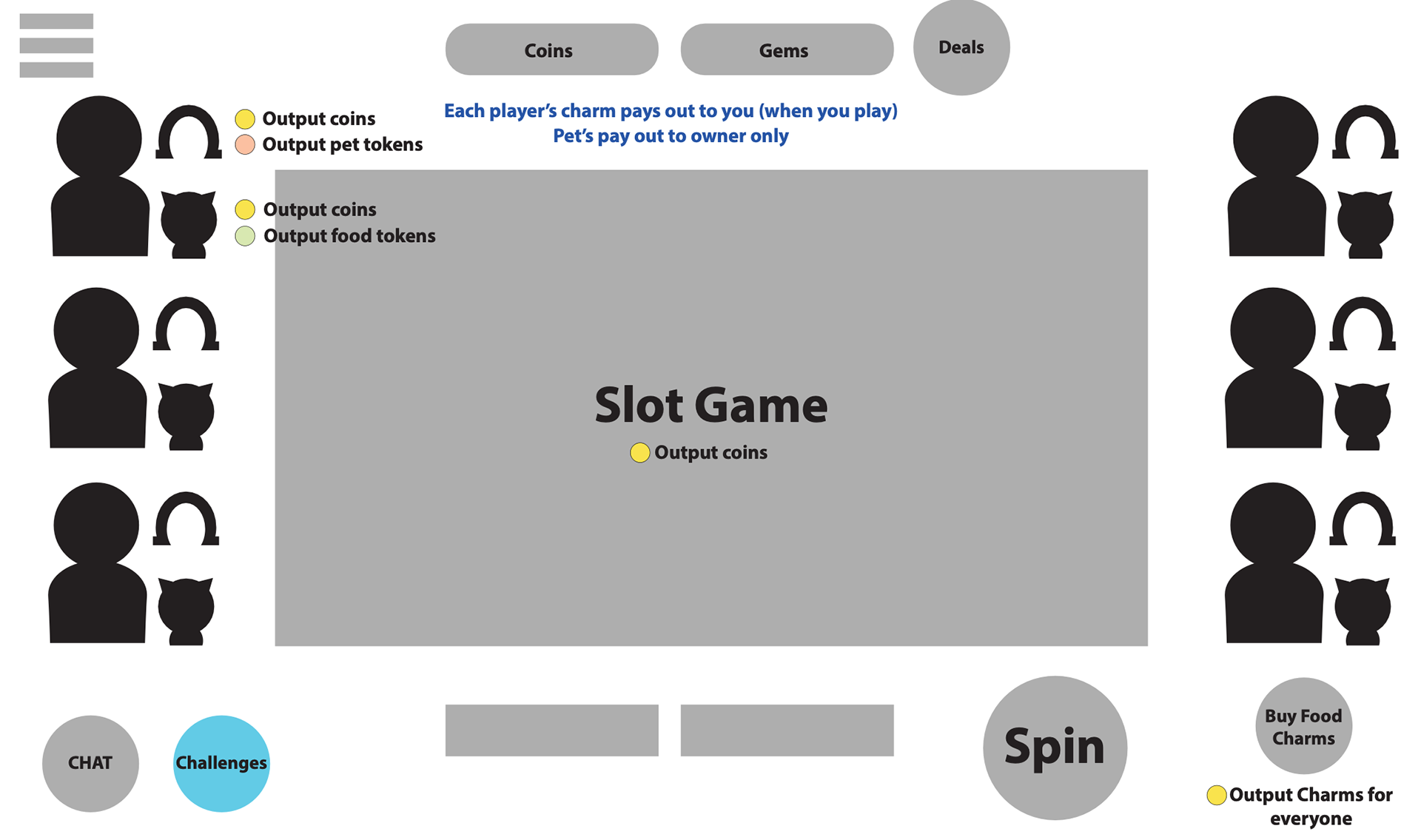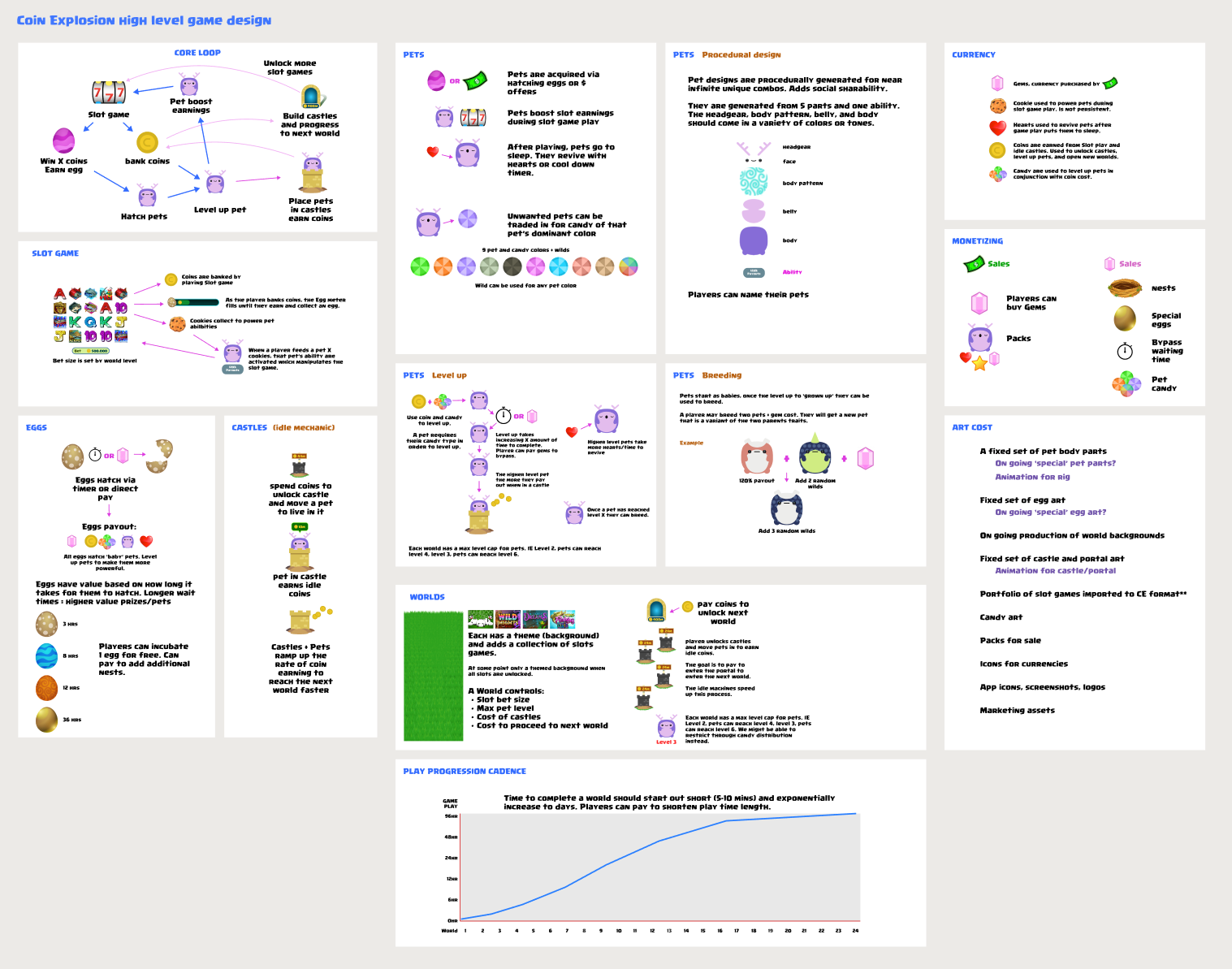Background
Flowplay's legacy platform was built for desktop gaming, but the industry has evolved significantly in the 17 years since the company started. To align with market trends, it was essential to develop mobile-first products. I took initiative to research and pitch a mobile-first game, leveraging our existing slot game portfolio which, from a business perspective, represented years of investment and time.
Flowplay has valuable user insights from years of customer service, interviews, and social interactions. One reason its dedicated desktop players continue playing is due to the social connections they make in the game. I suspected that mobile players have different motivation and play habits compared to desktop players. I wanted to understand mobile slot players' habits and collaborated with our vp of marketing to conduct interviews with mobile slot game players through usertesting.com. After gather the results, I created personas to guide the development of the mobile-first game.




Process
Mobile casual slot players prioritize personal relaxation and escapism, leading to shorter, more frequent play sessions. We decided to shift our focus away from social interactions and explore the concept of a slot game with a positive payout, exceeding 100% with the theory that this would encourage them to play more frequently. We identified that combine slots with idle game mechanics might be a winning combination.
To initiate discussions, I created concept wire-frames to provide the team with a visual starting point. I prefer starting with quick hand-drawn sketches, enabling rapid conceptualization and iteration. This approach keeps the team focused on high-level concepts without delving into details too early.





I mapped out the game loop to outline how this model might work. This helped the team to iterate on how the economy and core game experience would work. We learned through player feedback and testing that the concept of pets seemed very appealing. We added a pet meta game experience and conducted surveys of different pet design styles to see which would most likely appeal to our demographic range. Eventually the game concept would center around collecting and leveling up your pets through playing slot games.
Meanwhile, I continued to create initial, rudimentary game visuals.
Collaborating with other team members I refined the game loop.


Working with the project manager, we used the game loop diagrams to create the Game Design Doc. This was shared with the team and got the project approved for initial development.
We got the green light to develop a four-month vertical slice, with the goal of gathering user feedback. Positive results would allow us to advance the game to beta and proceed to launch.
The art director and I created a modular pet creature design. This would be a modular rig that could swap out accessories giving us millions of variations using a fairly small amount of art time and resources. I also further researched the visual style and UI treatment, drawing inspiration from popular casual games.
Working with the art director, artists, and animator, we solidified the design, asset system, and animation rig for the 'pets'.




I created multiple iterations on the game flow using Figma, blocking in animation beats, transitions, and interactions. This was very helpful for communicating with the stakeholders and developer.
I created a casual game style font to be used in the game.


Finally, I created the design library for all ui elements to hand off to the developer. This will make it easier to maintain and expand as the project grows.
Conclusion
I believe this project demonstrates my passion for ownership and a bias for action, and working under constraints of time and a limited scope. I took the initiative to steer us in the direction of a mobile-facing game while recognizing that our leadership preferred to stay within their comfort zone (slot games). Once we received the green light, I initiated conversations with my teammates, laying the groundwork for the game loops and creating low-fidelity wireframes. I strongly believe that for a project to deliver the best possible experience, everyone involved should have a sense of ownership. It's important to me to acknowledge the contributions of others and express gratitude for their excellent ideas.
At present, we're in the initial development stage. The plan is to test the core game loop with users and determine where to take it from there.
This has been one of the most enjoyable projects I've had the pleasure of working on. From the initial research and pitch to the development stages, I played a pivotal role in driving this project forward. I loved the collaborative process, actively incorporating feedback and insights from both the team and stakeholders.